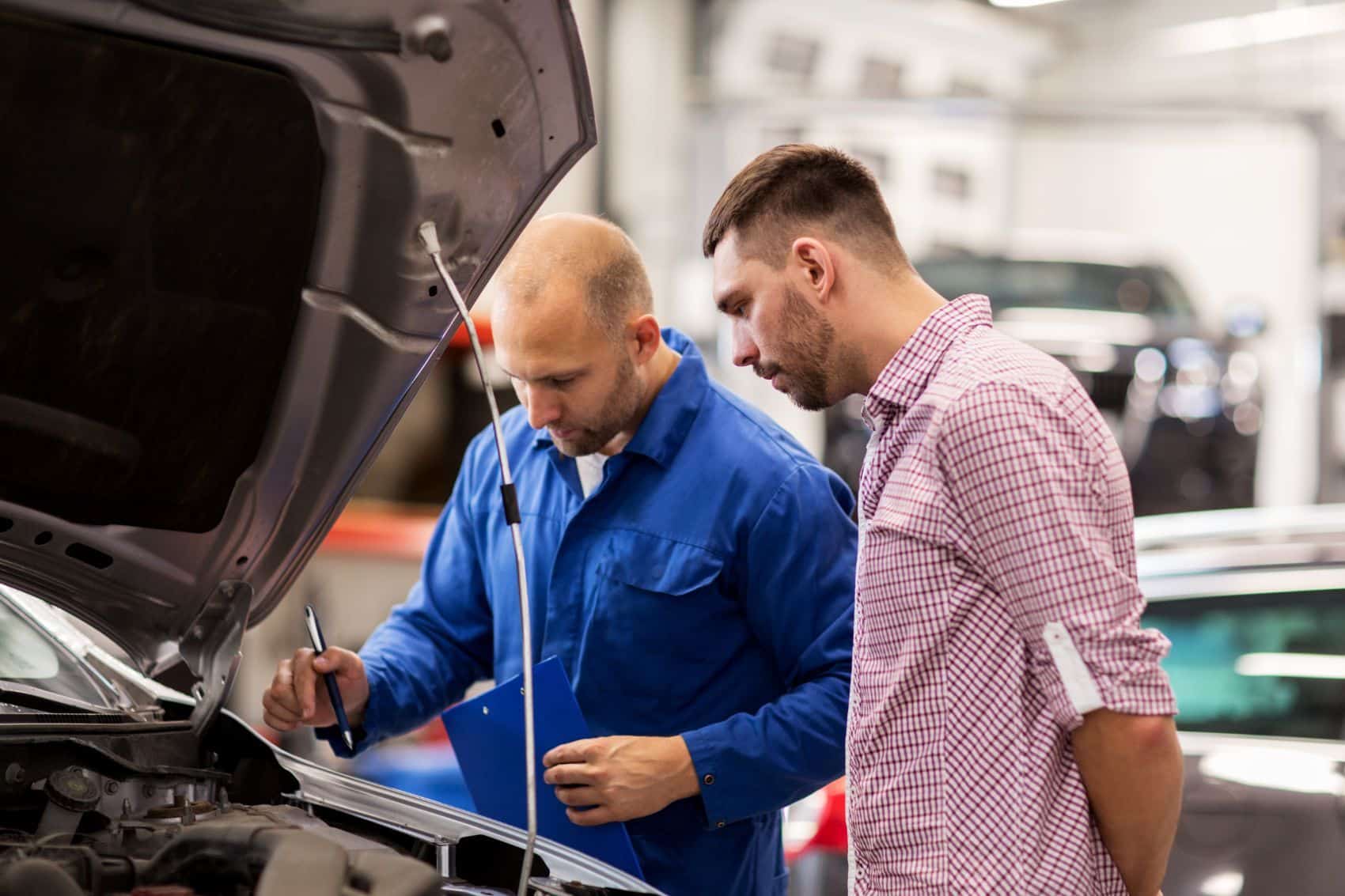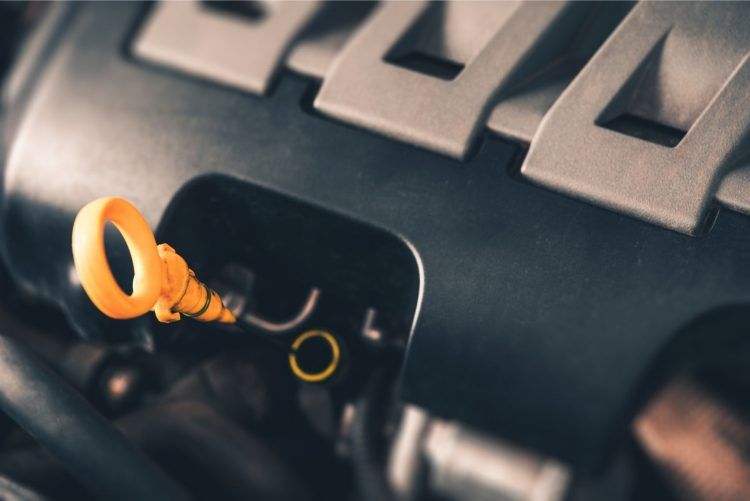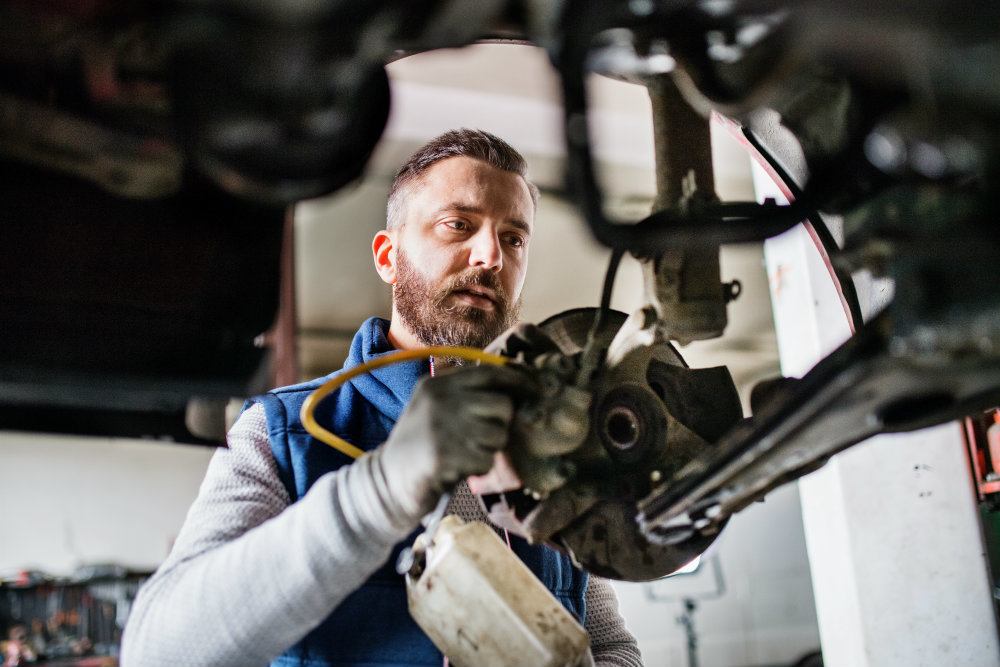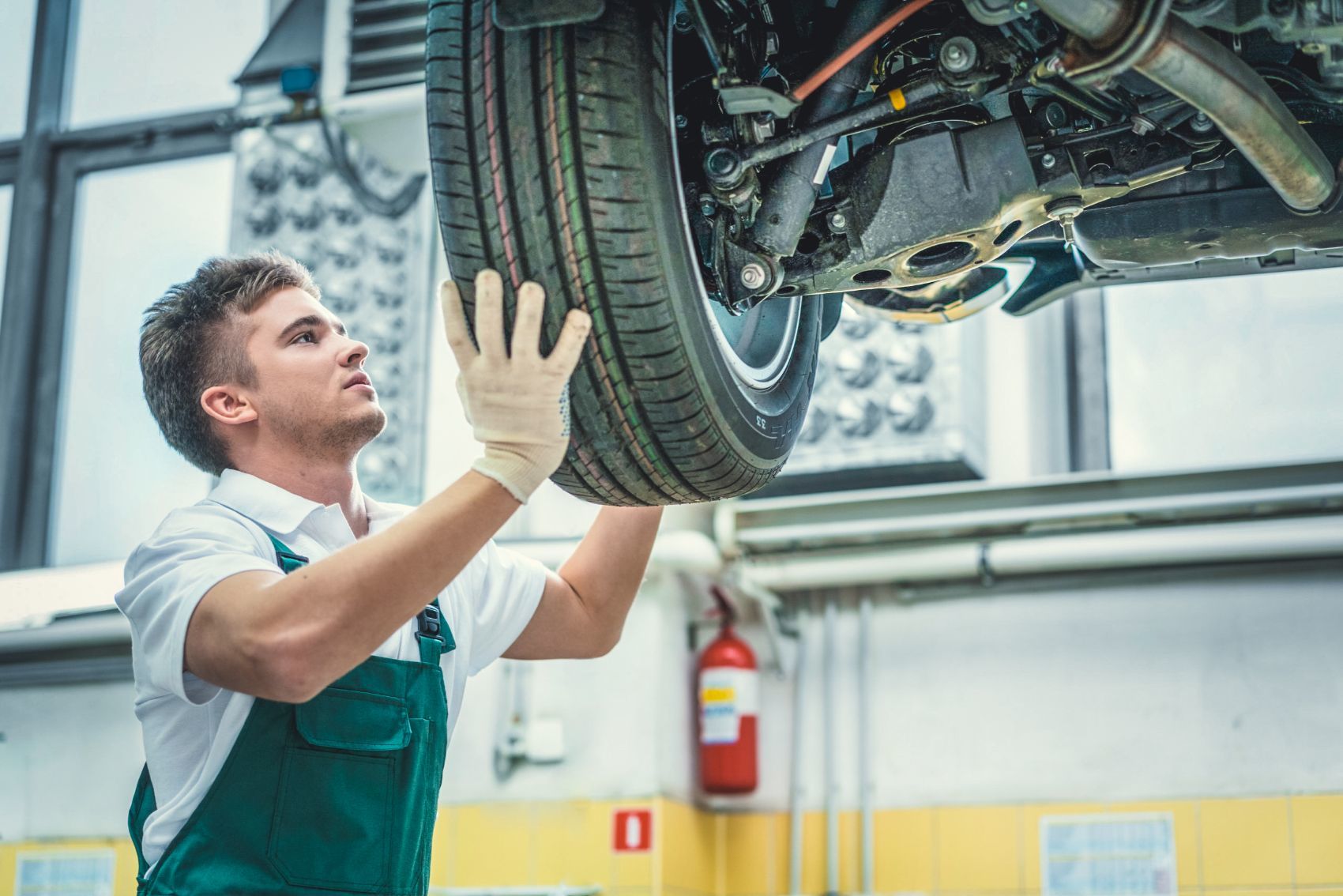If you plan on driving your vehicle for the long haul, you’re not alone. Americans are keeping their cars for longer, based on the latest research from the U.S. Department of Transportation. The department’s 2017 National Household Travel Survey finds the average vehicle age has increased from 9.3 years in 2009 to 10.5 years in 2017; and new vehicle transactions per household have slowed since 2009, according to the survey. Furthermore, new vehicle sales are down industry-wide which may be a reflection of the survey’s findings.
In this guide, we will examine a few essential ways to keep your vehicle in good running condition.
Make Your Car Last Longer With Free Resources
The Car Care Council offers a wealth of free information through a series of informative videos. The non-profit organization educates motorists about the importance of regular vehicle care and maintenance. We recommend the council’s free Car Care Guide, which has helped over three millions motorists. The guide is available electronically or in print, and in English and Spanish.
“The guide covers major services, component groups within the vehicle, service interval recommendations, and much more,” said Rich White, Executive Director of the Car Care Council. “Our website is filled with useful information to help motorists take a proactive role in maintaining their vehicles, navigate common maintenance procedures, and better understand auto repair needs.”
Focus On The Ordinary Stuff
The key to long vehicular life starts often with the most common maintenance items. Routine oil changes, fluid and filter replacements, and tire rotations are good ways to make your car last longer. Keeping on top of them can alleviate headaches down the road.
“Even though cars today are more technologically advanced, try not to think of it as rocket surgery or brain science,” said Carl Anthony, our Managing Editor and former Express Lube Service Manager at Luxury Auto Mall in Sioux Falls, South Dakota. “The age-old advice is still the best advice: change the oil, rotate the tires, and replace all the filters when necessary.”
“Whether changing the oil, replacing the wiper blades or checking the tires and brakes, finding the time to perform simple preventative maintenance ensures a safer, more dependable vehicle,” White added.
Engine Oil & Major Fluids
Motor oil provides essential lubrication and reduces wear on the internal moving parts. It also helps keep everything cool and clean, thanks to special detergents that mitigate sledge buildup. In short, the dirtier and older the oil, the less effective it is.
Major fluids, like transmission, coolant, brake, and power steering, work in the same fashion as engine oil, only in their respective environments. For example, transmission fluid lubricates the gears while minimizing corrosion and wear. If your car uses a hydraulic system, power steering fluid is important for lubricating the actual power steering pump. Those with four-wheel drive vehicles will also want to service the differential and transfer case fluids too.
“I was always a firm believer in replacing your car’s major fluids when the time comes,” Anthony said. “It’s good preventative maintenance, especially if you are planing on keeping your vehicle for a long time.”
When To Change The Oil & Fluids
With modern cars, following the oil life monitor is fine; and these days, 7,500 to 10,000 miles is not uncommon between oil changes. For older cars without an on-board monitor, it’s not as clear. Synthetic blends and full synthetics run longer than conventional oils, but as that Edmunds’ article points out, the once immortal 3,000 mile interval is no longer applicable. With regard to the other fluids, the mileage range for replacement may vary greatly, if they need replacement at all. Depending on your vehicle and the conditions it’s exposed to (hot summers and/or cold winters, for example), those service intervals may be sooner or later.
It’s always best to consult a trusted mechanic when in doubt.
“Everyone agrees the scheduled maintenance recommended by the automaker is the bare minimum,” said Rocco DeMas, Parts Manager, VW Parts Vortex. “If you can build a relationship with a dealership for all your maintenance work, they’ll give you good advice and help you avoid spending money on work you might not need.”
“Knowing what the owner’s manual says will help you maintain your car properly as well,” added Brandon Grade, Service Advisor at Findlay Toyota in Las Vegas, Nevada. “The people who built the car will know what should be done to maintain it.”

When To Change The Filters
When it comes to filters, mileage intervals can vary once again, but a good rule of thumb is every three years or 30,000 miles. Barring that, it’s generally best to replace them when they’re dirty and worn. Whatever you do, just don’t ignore them.
“If you decide to skip a fuel filter or air filter replacement, your engine will waste fuel,” DeMas explained. “You save twenty or fifty dollars on a filter, but you waste five on every tank of gas. Before long, you’re in the hole.”
“Car owners can save money by addressing small issues before they become more complicated and expensive,” White added. “By being proactive with vehicle maintenance, motorists will also have a more efficient-working vehicle, which will lead to better gas mileage and fewer visits to fill up the tank.”
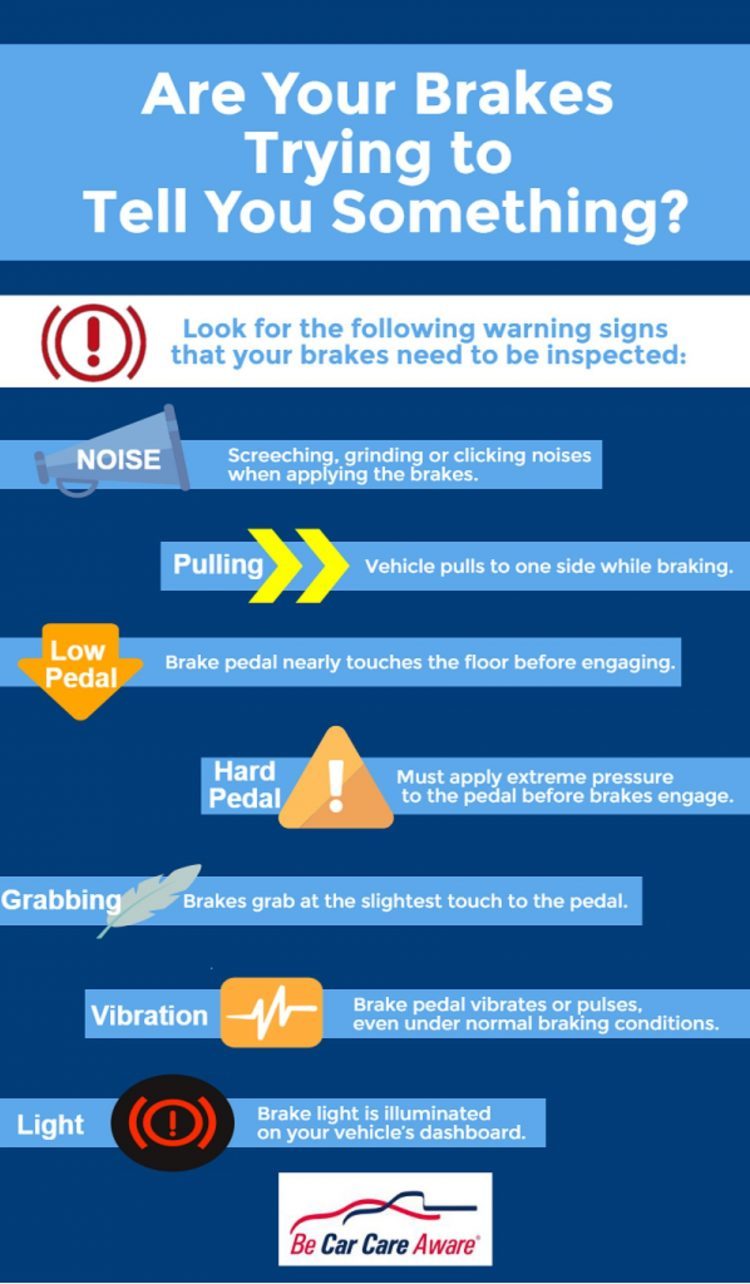
When The Rubber Meets The Road
Tires are an “out of sight, out of mind” item. However, worn tires put you and other road users at risk, especially during inclement weather. Research from AAA finds that driving on even relatively worn tires at highway speeds, and on wet surfaces, can increase stopping distances by nearly 90 feet. That’s more than the length of an eighteen-wheeler.
“Tires are what keep a car connected to the road,” said John Nielsen, AAA’s Managing Director of Automotive Engineering and Repair. “Even the most advanced safety systems rely on a tire’s basic ability to maintain traction, and AAA’s testing shows that wear has a significant impact on how quickly a vehicle can come to a stop in wet conditions to avoid a crash.”
“Shocks help too,” maintains Tom Blackman, Operations Manager for Olathe Toyota in Olathe, Kansas and Director of both the service and parts departments. “I haven’t seen any hard and fast data; but it’s generally believed that blown-out shocks increase stopping distances about five percent or so, simply because of increased weight transfer from rear to front, putting even more work on the shoulders of the front brakes.”
Current industry guidelines and state regulations usually recommend tire replacement at 2/32″ depth, but those guidelines are inconsistent, according to AAA. In the interest of safety, AAA recommends replacement at 4/32″ depth, since by that time, stopping performance is already decreasing. Most all-season tires have tread depths between 9/32″ and 11/32″ when brand new. During routine oil changes, a trusted mechanic will always perform a thorough multi-point inspection, which includes taking a measurement of your tires.
Keeping An Eye On Your Tires
Although there can be exceptions, the general consensus is to have a tire rotation performed every 5,000 to 7,500 miles. This will ensure the life of your tires by facilitating more even tread wear. Uneven tread wear can cause a loss of traction, a concern especially when the weather gets bad. The next time you are by your car, perform a visual inspection. If you spot any deep cracks, scrapes or bulges, especially on the sidewall, consider a replacement. There are other simple checks you can employ between oil changes too, including the popular “coin test.”
“Slip an upside-down quarter between your tire grooves and look at Washington’s head,” Nielsen said. “If you can see all of it, it’s time to start shopping for new tires.”
Other common causes of uneven tire wear are improper inflation and out-of-spec alignment conditions, according to Bridgestone. The tire manufacturer recommends keeping a close eye on these things, especially if you are planning a long trip. As for replacing your actual tires, experts say the more research you can do the better.
“People will give you real world experience rather than hypothetical, perfect scenario results,” Grade said. “That’s why I always advise everyone to look at customer reviews.”
“Most consumers don’t know that the official tire tread wear ratings you find on a tire are almost always provided by the tire manufacturer and not provided or tested by any third party,” Blackman added. “They may or may not be accurate, especially when you get to off-brand or imported tires without a reputation.”
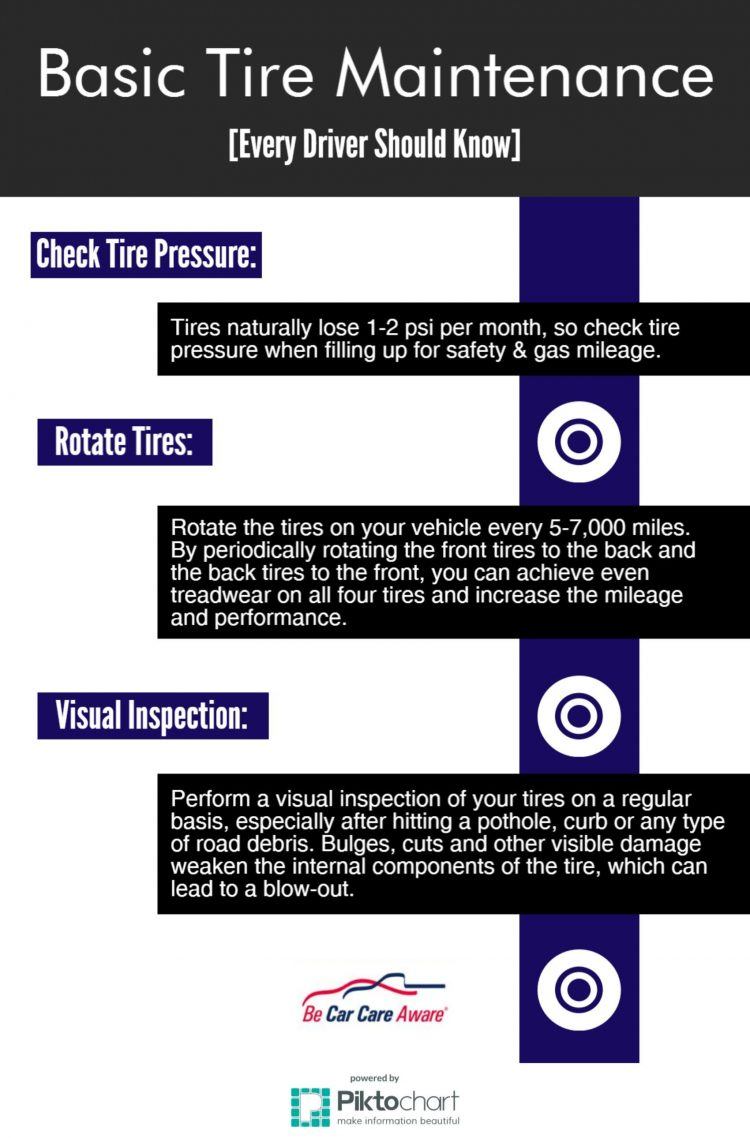
- Related: Buy a new car or fix your current one? Here is some practical advice.
Putting It All Together
Make it a point to schedule your vehicle for a checkup during National Car Care Awareness Month. And when in doubt, try not to overthink it too much. Just like going to the doctor for an annual physical, think of your car in a similar way.
“The most common maintenance procedures to keep a car operating safely and reliably, while maintaining its long-term value, include checking the oil, filters, and fluids; the belts and hoses, brakes, tires, and air conditioning,” White said. “And a thorough annual vehicle inspection is always recommended.”

